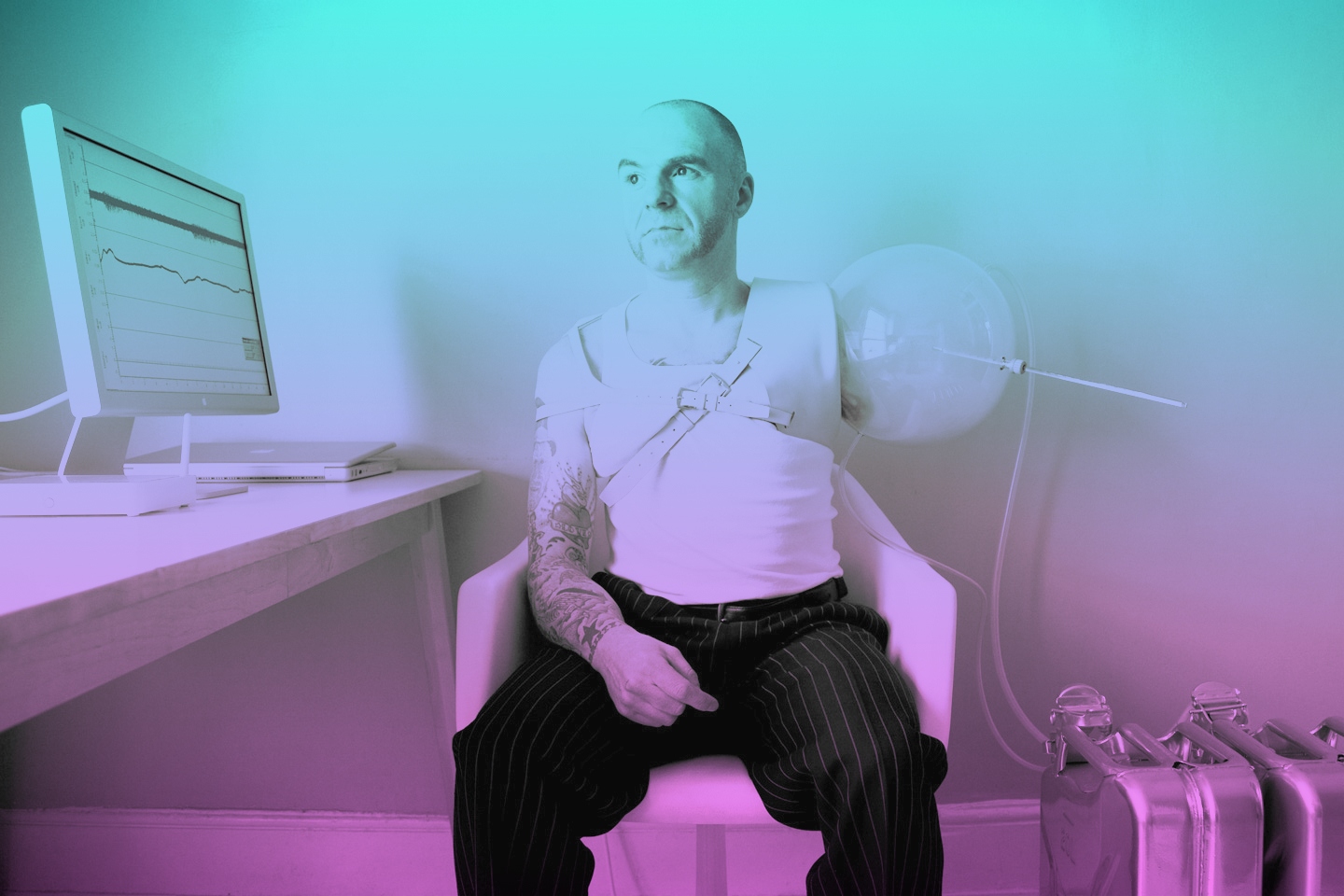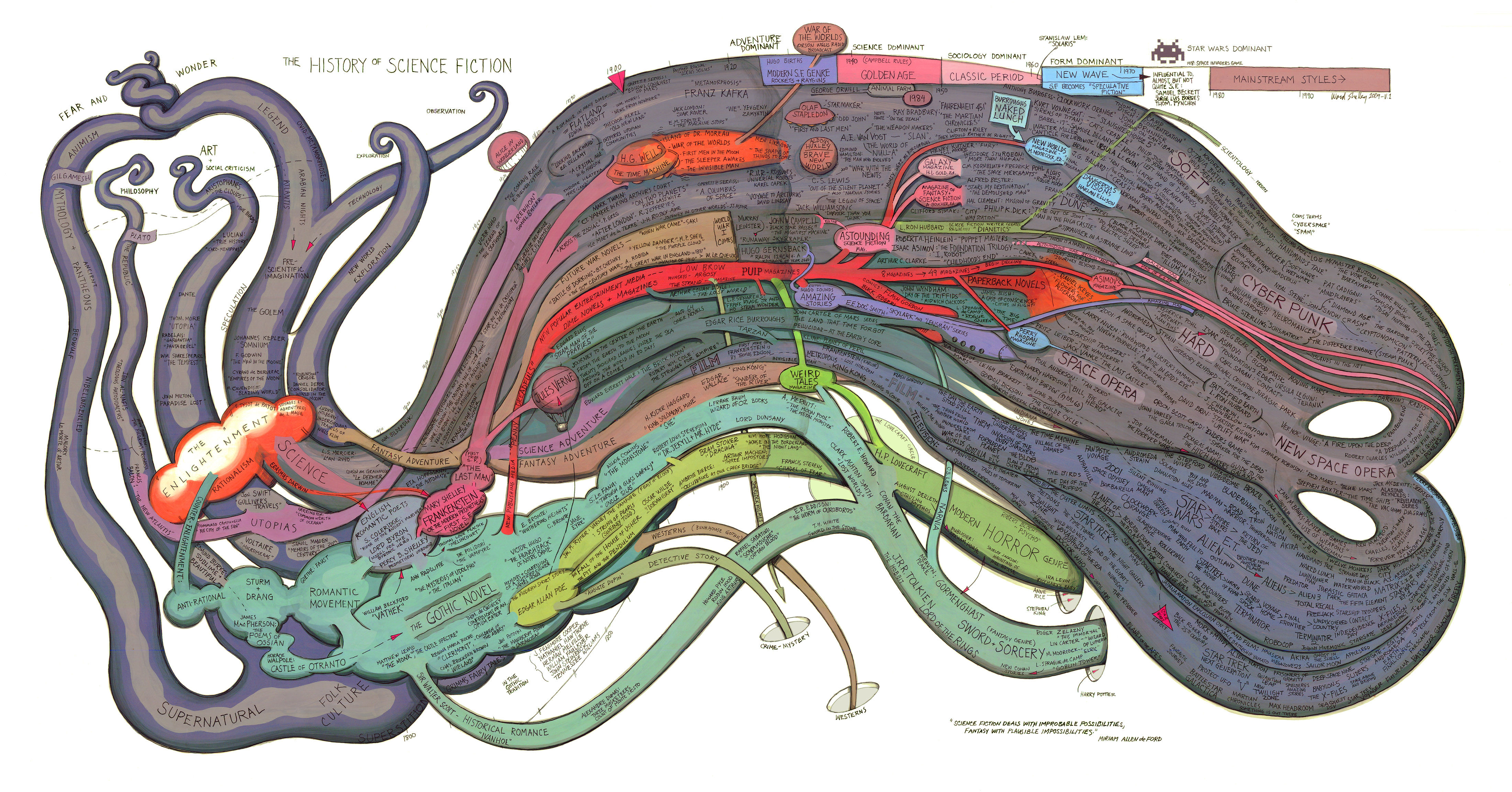Design is a blend of imagination and knowledge and we’ve been struggling to understand how much of it fiction and how much is engineering of some sort. We design products to make life better or less boring, or just because. But we always design for the future. We believe that we need products like new computers, cars, or foods to save us. And by doing so, we resort to the most evanescent design practice. Fiction.
Today, we’ll go through the correlations and entanglements of fiction and fact in design. And most importantly, how you can benefit from both. We’ll spice it up with real examples and study the roots materialism that has design in its core.
Contents:
Design as a fad
Design is saving products and services from demise. We realized that the setup is as important as the functionality when we started making emotional bonds to brands. Whether designed this way or accidentally, the products that cut us to the heart are likely to become our lifelong pals.
Unfortunately, somewhere along the way, we allowed ourselves to get carried away and started stretching design over the things that don’t need it. We call it ‘overdesign’ and it is just like what we saw with the advent of consumer electronics when companies started putting smart tech into everything. Sometimes it works out but most times, because of lack of quality of construction or limited usability, it contaminates the sheer idea of incorporating design into everything.
At some point, design turned from a ‘nice-to-have’ into a mandatory feature. Because of that, it became nothing but a prettification tool and devaluated the purpose of design – making things for the people.

Not everything needs design applied to it to add extra meaning to the way it works. The human mind will work the way it works regardless of our attempts to change it. We can only observe and adapt in which case we are not contributing to the design.
Design is a bridge between imagination and its physical form. When we use it to enhance something like productivity, we mean to take it further than the traditional ways of optimization. Design attached to anything has to employ totally different practices and bring new methods to completely rework it for potential future development.
That’s what we mean by saying that design is always for the future. It is a creative realization at its finest. We get to solidify our ideas in real things and see how it withstands the objective reality (materials and hardware) and the sensual introspective perception (UX). The true purpose of design is not in making things pretty. Decoration is only a tiny bit of its potential and the reason why design becomes a fad.
Design is a practice that allows us to take assumptions from imagination, twist and bend them to eventually satisfy the needs of the material world.
How fact and fiction intertwine
Design in the technological industry came along as a discipline of making new and controversial decisions based on today but aiming for tomorrow. The soul of design is the authoring process. In that sense, designers are no different from writers who describe non-existing ideas and materialize them so that they could fit the contemporary society.
We design material objects that come from an imagined context. In fact, there would never be anything made unless an idea of how it has to work in some imaginary situation, came to someone special.
Every material object tells a story. Even if there is no story, the object itself is one.
Let me get this clear. Even the most boring thing is a work of hours of ideation at some point. Things don’t come out of nowhere no matter how mundane they and their use cases are. There is always a story behind it.

This is an 1865 Edson P. Clark’s Indelible Pencil. A simple chemical formula and a handy wooden body made it one of the greatest inventions of the 19th century. It’s successor, which they call the ‘chemical pencil’ took over the world early into the 20th century. It was such a gamechanger that it had to be banned in prisons by some countries. The inmates would fabricate official document stamps, money and playing cards with those.
Design is a way for material objects to tell their story. But does the story rely on? Is it facts at hand or pure fiction? Fiction doesn’t exist and nobody will be willing to pay for it or invest in it. Facts, on the other hand, don’t impress. Science facts have zero divergences which makes them dead for ideation. Facts are made of stone and can’t have knowledge circulating within them. They can’t prepare themselves for the future and can’t save us either.
A fact doesn’t tell a story. Only history.
To be relevant, design has to rely on the stories that are real and earthbound, yet speculative enough to offer a reasoning that things don’t necessarily have to be what we think they are. This is where science fiction comes into play. It does a great job of taking facts and circulating them through various possibilities which creates unexpected outcomes. Science fiction is a complex genre, hard to grasp and harder to visualize.
But there is something designers can not only find for themselves but also contribute to. That something is called Design Fiction. It’s a coalescence of product design principles, science fact, and science fiction. It’s a discipline of materializing ideas without being held back by the dead weight of technical limitations.
“Design fiction as a communication and social object creates interactions and dialogues around futures that were missing before. It helps make it real enough for people that you can have a meaningful conversation with”. – Scott Smith
Design fiction is how you shamelessly try new approaches to solving the age-old Newtonian problems.
Fiction turned fact
As detached from reality as it is, fiction has always been a source of inspiration for real-life inventions. To illustrate the blurry edge between fact and fiction, we have a list of inventions that at some point were nothing but an imaginary value and an assumption that it might work.
3D Printer. Originally depicted in the iconic sci-fi series Star Trek, a replicator was a device capable of meterializing any object from an image.
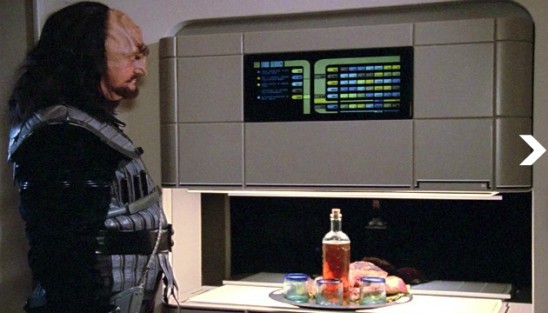
Full-body scans. The 1990 Total Recall showed a high-speed security body scanner. After 9/11, this idea received a massive boost and since 2016, the A.I.-powered high-speed body scanner is in development.

Reality TV. Another classic Arnold movie, 1987 The Running Man was based on a televised violent game show where a protagonist would get chased by a bunch of maniacs. Since then, there have been several TV projects putting people in harm’s way.
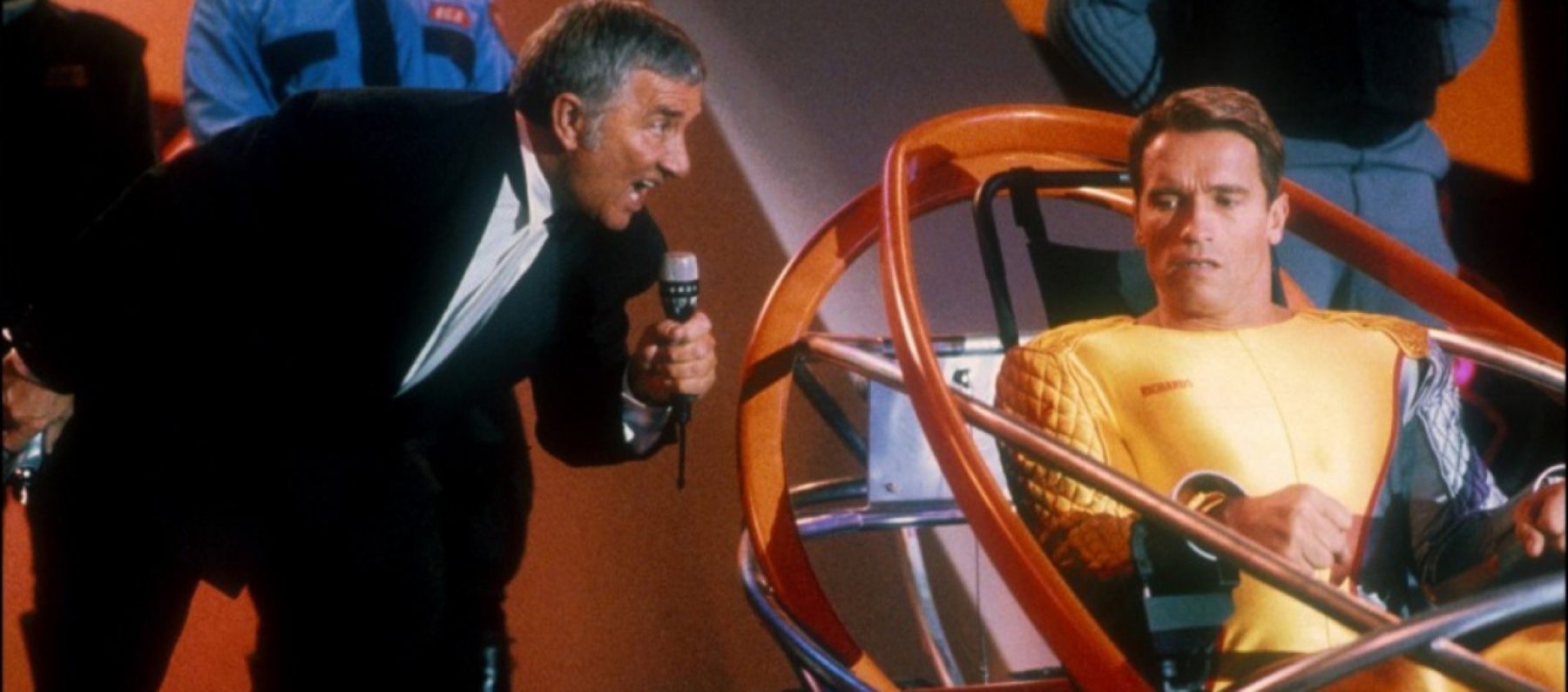
Gesture-based interface. In 2002, Minority Report blew everyone’s mind with its air touch control interfaces that looked surreal, yet extremely intuitive. Since then, the gaming industry has taken over this idea.
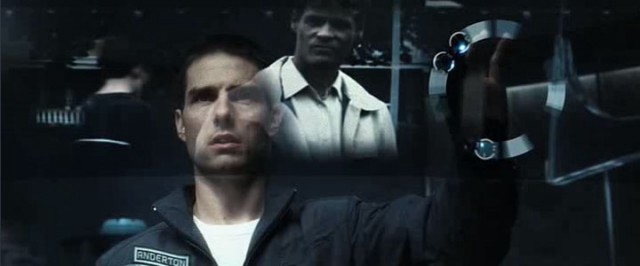
The reason we buy into this type of fiction is that it is constructed using our touchpoints with reality. It has the capacity to speak to a wider audience and create an impact that might be stronger than a statement of a fact both culturally and technologically.
Fact-inspired fiction
We are sort of deprived of a really cool historic phenom. We were born deep into total electrification of life. To understand the meaning of electricity in our life, try spending an hour without using any electrically powered technology. That will be a different kind of hour.
Electricity has put us on the verge of self-destruction. Twice. But it also gave a tremendous push to sci-fi infused design. This design paved the path for new expectations and made inventors strive for something out of this world.
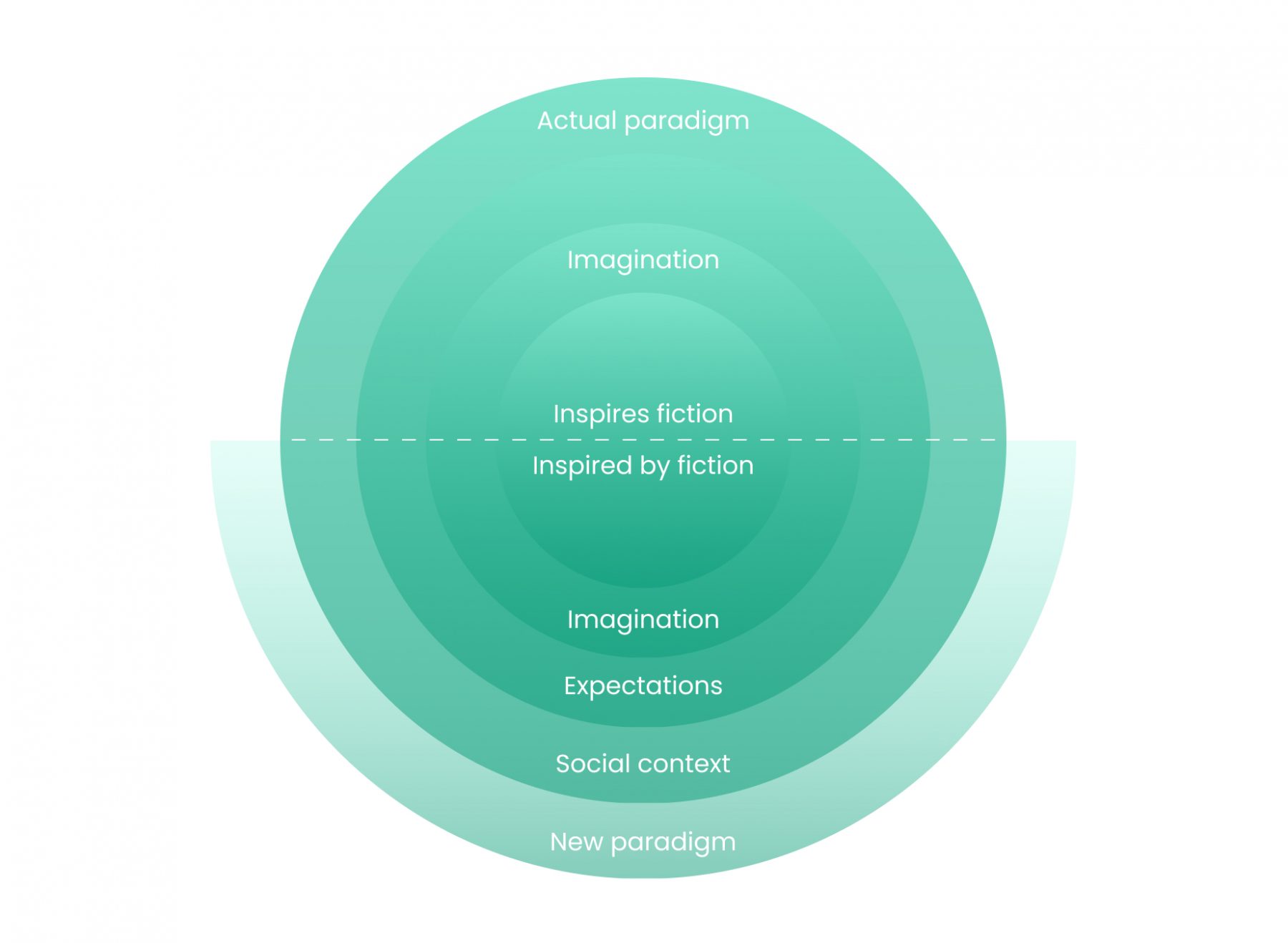
This correlation has been taken from the book called ‘Make It So: Interaction Design Lessons from Science Fiction’ by Nathan Shedroff and Christopher Noesell.
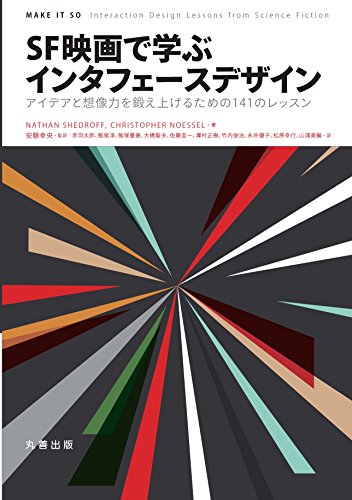
The new paradigm is the future. It might never appear the way we picture it but behind every assumption, there is an assemblage of imaginary things, materialism, functional software, ideology, and economy.
The worlds of the future aren’t designed to duplicate our world running on different principles. The future worlds have what it takes to let our creativity loose without being constrained by logic and laws of the real world.
In other words, we are more encouraged to do crazy things and get out of our sweet spots in an imaginary world than in real life full of consequences.
Fiction design
Designers have to go about materializing an idea that does not necessarily fit the existing paradigm. A science fact might tell you it’s impossible. Design fiction works in reverse – the less possible, the better. If it raises questions, provokes thought, creates innovation and exploration, it fulfills its purpose.
By trying out ideas in fictitious contexts, designers can tap into strategic vectors of the near future and predict the future of a product through their design decisions. In that sense, design fiction is a framework for ideation.
Design fiction combines the principles of writing and storytelling with knowledge about material objects.
The end product of design fiction is a product with stories about the new and unexpected social practices made around this product. Any idea requires validation and design fiction helps develop a critical perspective of the interactions with this product. With design fiction, we can make opportunities for ponderism as well as real industrial production.
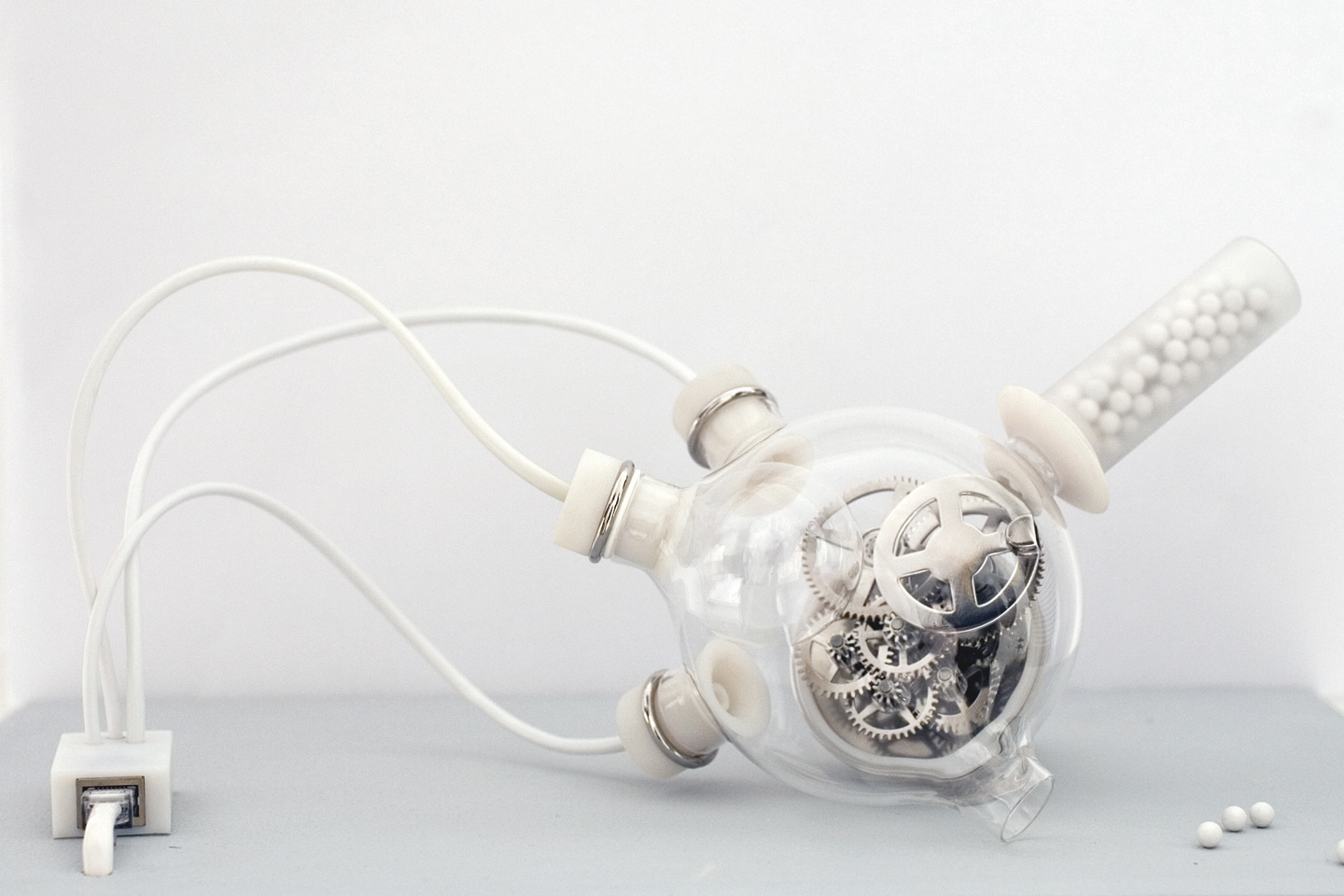
Artificial biological clock by Revital Cohen
Problem
Design that encourages fiction as an extrapolation principle is hopeful and optimistic but also severely insecure. When it comes to money, fiction is on the weak side. Everything that legitimizes fiction design is purely hypothetical.
The worst part about fiction design is it often starts with: “I know this might sound crazy but bear with me…”
The success of such an endeavor depends entirely on the power of a designer’s adventurism. If they can lure people along the untrodden murky but promising path, they can leverage fiction design to its fullest.
‘Idea sex’
In order to surpass this problem, we need to remember that any science fact started with an assumption. Like every imagined idea that has to end with a fact. If we accept that there is no opposition between fact and fiction, we’ll be able to benefit from both.
This is what Matt Ridley calls ‘Ideas having sex’. He makes a point that humanity’s development is a product of population growth. As the planet’s population doubles, the per-capita income triples. This is only possible because we live in a world of distributed skills. Each one of us knows something the other doesn’t but there is no one who knows everything. This is called specialization and it has unlimited potential written all over it.
Being a specialist means your work can travel way beyond you. Human body wears but ideas don’t. Your ideas might inspire someone who doesn’t know you and never will. They will connect your ideas to theirs and through those ideas, you will meet.
When even the most opposing ideas have sex, something will eventually come up. What else is idea sex other than design?
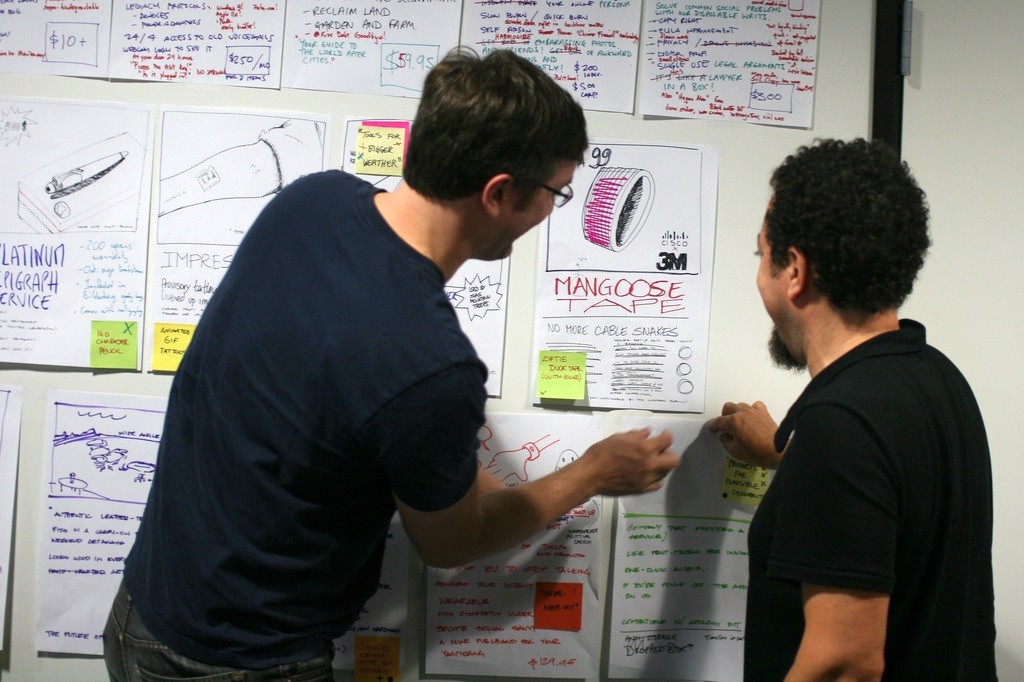
Near Future Laboratory doing design fiction
Design knits together science, feelings, fact, and fiction. Together, they can exclude the mundane fixed processes and constraints that people call ‘practicalities’. There’s nothing wrong with being practical and working towards the current tangible goals.
However, to stay afloat, design has to stay unleashed. According to Julian Bleecker, what keeps it unleashed is “the approach that finds ways to tell speculative stories unhindered by notions of future prediction, or interpretations of focus group rationales, or markets demands, or end-users”.
Actual practice
Understanding the magnitude of fiction in design is one thing, another is putting that knowledge to practice. Design ideas yield value through materialization.
Product design rooted in fiction is powered by the visionaries whose desire to delve into the uncharted territories is stronger than greed for profit.
To successfully materialize an idea we must know the public request. Fiction goes in front of implementation so people tend to expect ideas to be fulfilled. This speaks volumes about the problems people have in the current world and dream of not having in the future.
Create. Make things up, bring unexpected ideas to life, tell stories, invent experiences and social context. Provoke yourself to introspect the current paradigm in order to contemplate your new better future.
Another way to materialize an idea is to have the graphical means to do so. An idea of a digital product has to operate within an interface. Or no interface. Design it so that a new practice could fit into the existing UI logic.
Responsibility. Because you find inspiration in fiction doesn’t mean you won’t be held accountable for your decisions. Every product has social context and what solves a problem for one might do harm to the other. In 1940, Robert Heinlein published a short story called “Solution Unsatisfactory”. It is a near future fiction about the United States deploying a nuclear bomb to end WWII which then launches the nuclear arms race to the demise of the planet. We don’t know whether the prophets are to blame for what they predict, but having the knowledge and not taking action is a crime.
To make sure our design ideas are safe, ethical while being functional, we need to take them for a walk and create prototypes. However, it shouldn’t be a prototype in its traditional meaning. A design prototype is not an imprint of functional engineering, not a demo version of what’s coming. It is an envisioned story that through itself reveals the significance of a product. A design prototype lives a snippet of real life, tells a story, feels the pain, and struggles through. This drama is more valuable than a lackluster technical prototype.
Conclusion
We care for how the product we are designing might affect the future world. We need creative and imaginative ways to put ideas into the material form. We will never stop because future matters.
As designers we are given the power to construct the future not only for ourselves but for humanity in general.
